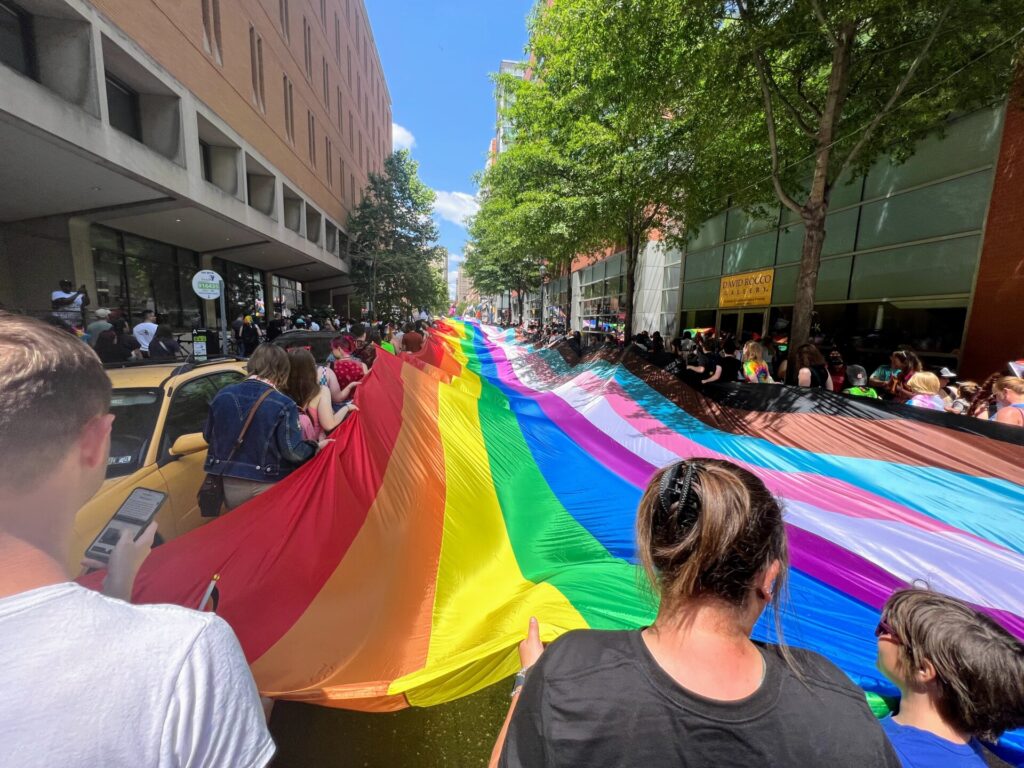One of the challenges facing public health is making HIV prevention relevant to gay men today. As public attention and resources have shifted to other populations, communities of gay men that had been touted as early successes in the war on HIV, have begun to have increased risky behaviors as evidenced by incidence of STDs and HIV. Gay men, who have borne the brunt of the stigma and hard work of defining community and individual identities around sero-status, have been said to face “HIV fatigue.”
The Battle Isn’t Over: As the HIV epidemic decimated communities of gay men throughout the U.S. in the 1980s, gay men, our lesbian sisters, and other activist help formed some of the most effective community based organizations, HIV prevention messages, and political strategies that have been seen to date in this country’s response to AIDS. One of the most frequently cited “successes” of early HIV prevention efforts was the significant change in community norms that occurred among gay men in major metropolitan areas such as Philadelphia. These norms were reflected in the purposeful eroticization of “safe sex” in our communities. Images of hot sexy male bodies intertwined surrounded by condoms, holding condoms, or wearing condoms on their turgid members were nascent and helped establish an expectation that hot and healthy sex would mean condom use.
Today, the warning signs of a re-emerging HIV epidemic among gay men are all around us. Or, more accurately the warning signs of an intersection of multiple epidemics of HIV, other sexually transmitted diseases (STDs), and drug use surround us. Our battle with HIV clearly isn’t over, but you wouldn’t necessarily know this from taking a quick “Logo-esque” snapshot of our community. That is unless you know where to look.
In Philadelphia, for example in 2006, there was an 88% increase in the number of new Syphilis cases among men who have sex with men. Nationally, there has been a steady increase in the number of gay men with drug-resistant Gonorrhea. And there has been a sharp increase in the number of new HIV infections among gay and bisexual men of color in many parts of the U.S.
Reading the Tea Leaves: Why has this happened? Concerned researchers and public health officials have labeled this phenomenon “HIV Fatigue.” But is that all it is? As AIDS activists and advocates we’ve been tired before. Have we just given up? One of the difficulties of “diagnosing” and “treating” what is “wrong” with gay men or the gay male community regarding our HIV prevention efforts is the simplistic framing of the questions. What is possible for us to achieve in our lives is a complex interplay between individual choices and behaviors and the social and cultural practices that surround us. Gay men can choose to either be a part of those socially defined spaces (often stereotypes) or we may be trying to subvert these social definitions and create our own meaning and realities. We also have gay male communities (plural) even within a defined geographic locale, e.g., leather men, bears, twinks, gym bunnies, thugs, etc. The fact that these sub-communities may be thriving and teaming with hot men doesn’t always translate into a larger community that is protective of our health.
We get mixed messages that target us both as individuals and as members of a community. Ever since public health authorities have promoted HIV testing, gay men, or at least significant numbers of gay men (what we call the “worried well”) have developed a hyper-vigilance on HIV labeling for ourselves via testing. In this sense the HIV test serves as re-assurance that what we are already doing is “safe” and tells us we can continue our existing sexual practices. In this model, or frame of thinking, we ignore other STDs and the actual risks associated with our sex practices are ignored. Of course knowing one’s HIV status is part of the equation. But it is a necessary and not sufficient condition for HIV prevention.
As gay men, we’ve also developed rituals and fetishize, some aspects of our sexual lives, while ignoring others. These rituals are centered around the adrenaline rush of a first time sexual encounter, the release and “touch” of semen (feeling it on or in our bodies), desiring and having desire returned (knowing/feeling that we are desired as well). The fetishes may manifest themselves in many ways. And we as gay men may choose to engage in these ritualistic acts which include: “anonymous” sex partners, “anonymous” sex practices (glory hole, hooded), “bareback” sex (unprotected anal intercourse), “cum” exchange as a practice defining the extent of the intimacy we allow ourselves (“pump and dump,” “cum pig”).
In some ways this all comes back to our individual notions of what is “safe.” Safety to some gay men may be safety within one’s own comfort zone of perceived gender/sex roles. One “safe” notion of masculinity flows from the “conquest” model of male sexuality. In this model, men seek sexual fulfillment in pursuing others that will follow their “no strings attached” demands–sexual release without fear of commitment. Safety for many men is the safety of anonymous sex—sex with someone who can’t identify them to others. In some cases the stigma of an identity defined by sexual orientation or sexual practice is greater than the stigma of putting oneself at heightened risk for HIV. In this way of thinking, sexual identity is more important than actual sexual behavior or practice. Thus men who have sex with men can convince themselves that the men who represent risk to themselves are “gay men,” while “straight men,” “married men,” or “bisexual men” who they may have sex with do not represent a risk.
Where We Go from Here: As a community, gay men have a lot of strengths. We eroticized safer sex! No one did it for us. In fact, we did it in the face of a government that was hostile to open sexual expression and that actually promulgated a policy of “no promo-homo.” Government policy has continued to stress the unrealistic goals of abstinence and lifetime condom use in the absence of a community dialogue about the centrality of sex and intimacy in our lives. In this void, gay men developed different ways of eroticizing and fulfilling our lives and ritualizing sex.
Thinking of our sexual health as central to our overall health and wellbeing is a starting point for developing effective approaches to HIV and STD prevention for gay men. Acknowledging and enhancing the role of intimacy in our lives and understanding how our sexual practices have often developed as a result of how we deal or don’t deal with our needs for intimacy is a crucial piece of our sexual health.
SafeGuards is working to re-create a community-wide consciousness around HIV prevention. We are concerned about the lack of relevancy of the traditional models of HIV prevention, the disconnection of testing services from health advocacy and community building, and the lack of an array of formal and informal opportunities for gay men to come together and talk about their needs for sex and intimacy in the era of AIDS and denial. We seek to rekindle the community norms and expectations around gay men’s safety in our sexual health. We believe it is time in Philadelphia to re-ignite this passion and develop a new generation of community leaders in the fight to prevent new HIV infections among gay men. Hope you’ll join us—Bring it!






